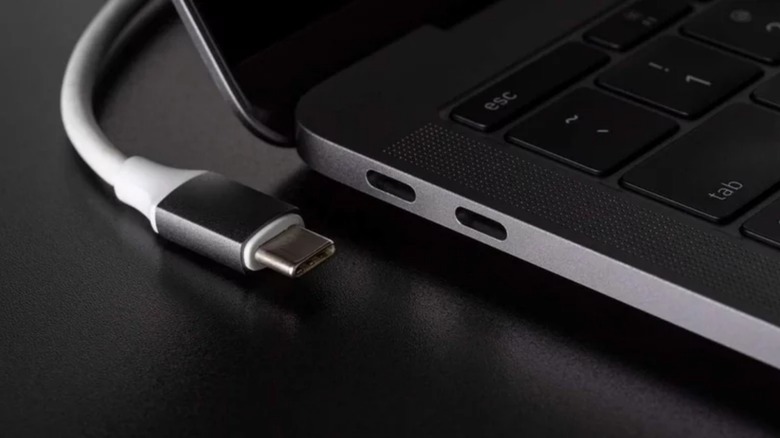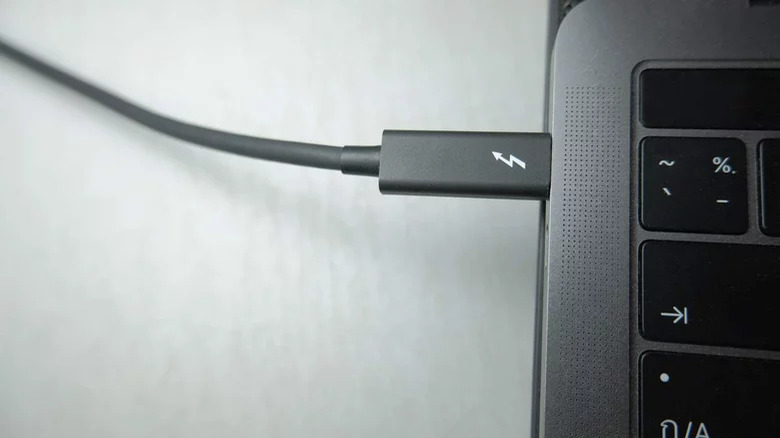USB-C Vs Thunderbolt 3: Which Is Better?
USB-C and Thunderbolt are two of the most common types of ports for computers, smartphones, and tablets. Both ports offer high-speed I/O and support a wide range of devices. While the two ports are visually indistinguishable, there are significant differences between them.
The latest version of the USB interface, USB-C, was quickly adopted by many device manufacturers. Computers — both PCs and Macs — all use USB-C, as do smartphones and tablets, thanks in no small part to the port's versatility.
USB-C provides up to 100W of power to attached devices (via Tech Advisor), making it possible to daisy-chain devices, meaning a single port can support multiple peripherals. As a result, manufacturers can design computers with fewer ports, without limiting the number of peripherals customers can use simultaneously.
The latest version of USB-C also supports data transfer speeds of up to 20 Gbps, yet another factor that makes it a good port for peripherals.
How Thunderbolt Differs From USB-C
Despite all of USB-C's advantages, Thunderbolt is better.
The interface was created by Intel and Apple and has seen its physical port change over the years. Initial versions of Thunderbolt used a Mini DisplayPort as the physical connector. With the rise of USB-C, however, Intel switched to that style of connector as the hardware interface for Thunderbolt. As a result, a Thunderbolt cable can be used interchangeably with any USB-C port, although that doesn't mean all USB-C ports are Thunderbolt ports.
The primary difference between the two standards is speed. While USB-C supports up to 20 Gbps transfer speeds, Thunderbolt 3 doubles that, delivering up to 40 Gbps (via Thunderbolt Community).
Thanks to the increased speeds, Thunderbolt is ideal for media professionals and anyone who has to transfer large amounts of data. Again, it's important to note that Thunderbolt only delivers faster speeds when both devices support it. Plug a Thunderbolt peripheral into a USB-C port and the connection will be limited by the slower of the two.
While it's definitely convenient that both standards use a single physical interface, buyers wanting the faster Thunderbolt should make sure the computer they're buying supports it — not just the slower USB-C.

